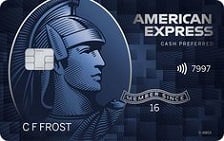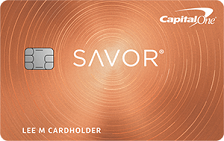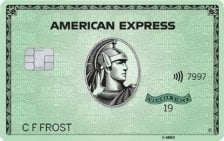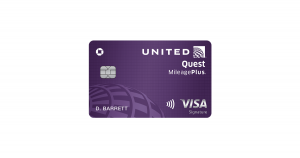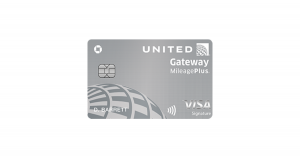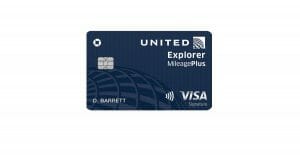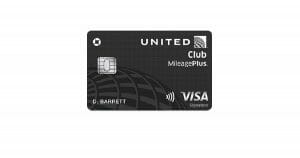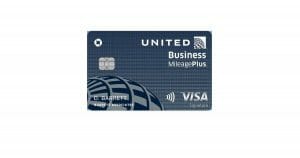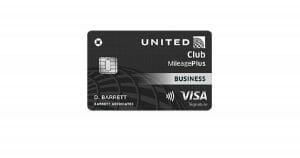Balance Transfer Basics
Balance transfer credit cards are exactly what they sound like. They allow consumers to move their debt from one card to another. Typically, this is done to secure more favorable terms, such as a lower interest rate or better rewards. Before transferring a credit card balance, you must apply for and be approved for the new card.
How to Make a Balance Transfer
Here is a detailed discussion about the balance transfer process, from start to finish:
Step 1: Make a Plan
Planning should be your first step in any process involving your financial well-being. Before you start the balance transfer process, ask yourself the following questions:
- Can you afford to pay down the current credit card balance? If you are struggling with credit card debt, your first course of action should be to contact the lender to discuss forbearance and other options.
- What’s your credit score? Excellent credit usually entitles you to better (lower) interest rates and larger credit limits. This rule applies to low APR, 0% intro APR, and balance transfer credit cards. If you have excellent credit, you can transfer a greater balance than someone with a good credit score.
- Are you willing to set up automatic payments? Setting your credit cards to autopay can help you avoid missing payments and facing a penalty interest rate for up to a year (or more).
- Is a balance transfer right for me? A balance transfer might not make sense if the new card has a short 0% intro APR period, no promotional period, or if the balance transfer fees cost more than you expected.
Step 2: Apply for a Balance Transfer Credit Card
Applying for a credit card can take as little time as a few minutes. You’ll need to provide some basic financial and personal information to apply. This information includes your full name, mailing (and email) address, Social Security Number (SSN), and income.
Applying for a balance transfer credit card will likely result in a hard inquiry on your credit report. This action temporarily affects your credit score, dropping off your credit report after 24 months – or two years. Fortunately, adding a new balance transfer card can also lower credit utilization, raising your credit score.
Expect a quick decision on your balance transfer request. Most banks provide an instant decision on transfer requests. However, banks may delay some decisions due to several factors.
Step 3: Transfer the Credit Card Balance
Transferring a balance is easy once approved: sit back and let your new bank’s customer service team handle the work.
Before finalizing a balance transfer, make payments on old credit cards (including the one from which you are transferring the balance) to ensure you stay current on payments. Missed payments account for 35% of your FICO credit score – so be careful.
Once the new credit card issuer notifies you that the balance transfer is complete, contact your old bank to ensure the correct amount was transferred.
Step 4: Pay Down (or off) the Balance
Once the balance transfers, you must make all your payments as scheduled. If you have a credit card with 0% intro APR, use that promotional period to your advantage to pay the new balance.
Missing payments will lead to forfeiture of any promo APR. Penalty APR is a particular interest rate for missing your monthly payment and grace period. Typically, a penalty interest rate lasts for at least six months to a year and is around 31.99%, but it could be higher.
Benefits of Consolidating Credit Card Debt Through Balance Transfers
When done correctly, consumers can benefit greatly from consolidating credit card debt through balance transfers. Benefits include:
- Lower interest rates: Lowering your interest rate will result in more of your monthly payment going toward the principal, allowing you to pay down the debt much faster.
- 0% APR introductory offers: Many balance transfer cards provide introductory 0% APR for a set period of time, such as six months or one year. This gives you time to attack the debt without continuing to grow each month.
- One simple payment: Consolidating the debt from multiple cards to one card via a series of balance transfers means you only need to make one monthly payment. This makes the debt much easier to track, decreasing the chances of accidentally missing a payment.
- Higher credit score: Lowering your credit utilization and making on-time payments are more likely when your debt is all in one place. This will increase your overall credit score.
- Reduced stress: When you have a plan in place to address your credit card debt, you’ll find that your stress levels naturally begin to decrease. You gain confidence and feel more equipped to advance toward financial freedom.
Balance Transfer Mistakes to Avoid
Before you transfer a credit card balance, there are a few common mistakes to avoid.
Not Taking the Time to Prequalify
When you apply for a balance transfer credit card, the associated financial institution will check your credit. This type of inquiry is a hard credit check, which negatively affects your FICO score. You don’t want to ding your credit score if you don’t even qualify for the card.
Instead, take the time to prequalify for the card you want to use to consolidate your debt. Prequalification may involve a soft credit check, but this type does not affect your credit score. Only proceed if you get the go-ahead from the prequalification results.
Not Taking the Time to Compare Cards
Balance transfer cards come in a wide range of terms. It’s essential that you take the time to compare the cards you prequalify for before going with the first card that looks good. For example, if you’re currently paying an APR of 18%, but immediately sign up for a card with a 10% APR while there is a card out there that offers 0% APR for 6 months and 10% APR thereafter, you just missed out on the opportunity to tackle the principle for 6 months without accruing any debt.
Additionally, some 0% APR cards come with a balance transfer fee. If you qualify for another card that offers the same APR without the fee, you’ll save more money in the long run.
Not Checking the Credit Limit
Signing up for a card without checking the credit limit may mean you don’t have enough of a limit to cover the debt you need to consolidate. That would defeat the whole purpose of moving all of your debt onto one card. According to Experian, you’ll also need to be aware of the card’s balance transfer limit. Let’s say you need to transfer $10,000 in debt. Your new card has a credit limit of $10,000, but a balance transfer limit of only $7,500. That means you’ll still leave a balance of $2,500 on your old card.
Not Paying Attention to the Promotional Terms
With most balance transfer cards, promotional offers are subject to a set of terms. In addition to an introductory APR expiring after a set timeframe, consumers must take advantage of the balance transfer by a certain date. This may be as quick as 45 days or as long as 3 months. That means if you don’t consolidate your debt by transferring the balances before the designated date, you’ll end up with a new card and forgo all of the associated benefits.
Continuing to Incur Debt
Once you have successfully consolidated your debt by transferring the balances from your old cards to your new card, you must cease to use them. Remember that your goal is to get out of debt, increase your credit score, and set yourself up for financial success. Using the cards will not only put you further in debt, but it will also increase your credit utilization rate, which results in a lower credit score.
Missing a Payment During the Promotional Period
It’s common knowledge that missing a payment or making a late payment on any credit card will negatively affect your credit score, as financial institutions report this information to the credit bureaus. What you may not realize, however, is that missing a payment during the promotional period may result in a nullification of the promotional terms. If you were enjoying a 0% introductory APR, a missed payment could trigger the end of that rate and the start of the regular rate.
Canceling Old Credit Cards
Canceling your old credit cards after transferring their balances to a new card will remove the temptation to use them; however, doing so will reduce your credit score. This is because the credit bureaus take into consideration credit age, as well as your credit utilization rate. Rather than closing out the accounts, leave them open, but don’t use them. If temptation is an issue, consider placing them in a folder in your filing cabinet instead of your wallet.
Not Creating a Budget to Repay the Debt
When it comes to balance transfer mistakes, not creating a budget to repay the credit card debt is one of the biggest. It’s best to eliminate the debt during introductory APR periods, especially if you’ve secured a 0% APR. So, if you have an interest-free period of 12 months for a credit card balance of $4,000, you’d need to place a monthly payment of $333.33 in your budget in order to clear the debt.
Successful Strategies for Navigating the Balance Transfer Process
Implement these balance transfer tips, and you’ll be one step closer to financial stability:
- Do your homework. Take the time to list all of your credit card debts, including balances owed and current interest rates. Research and compare the offers of several balance transfer cards before choosing the one that best fits your needs. Ensure you read the fine print and fully understand all the terms and conditions.
- Request the transfer. Some financial institutions will allow you to request balance transfers online or over the phone. Others provide balance transfer checks. If you can’t cover your entire debt with your new card, transfer balances from the cards with the highest interest rates first.
- Take advantage of the introductory period. Pay as much as you can, if not all, during the introductory period. This is when you’ll save the most money.
- Set up automated payments if possible. Using auto-pay is a great way to avoid missing or making a payment late.
- Check balances monthly to monitor your progress. Watching your balances go down will give you the motivation to continue.
Conclusion
Consolidating credit card debt through balance transfers can be a prudent financial decision, offering a means to streamline payments and save on interest. However, it’s crucial to be well-informed about the process and potential pitfalls. By understanding the balance transfer process and avoiding common mistakes, individuals can confidently navigate this financial tool to their advantage.
When done correctly, balance transfers offer numerous benefits, including lower interest rates, introductory 0% APR offers, simplified payments, potential credit score improvements, and reduced stress. However, it’s essential to steer clear of common mistakes such as not prequalifying for cards, failing to compare terms, disregarding credit limits and promotional terms, continuing to accumulate debt, missing payments, canceling old credit cards, and neglecting to create a repayment budget.
Successful strategies for navigating the balance transfer process include thorough research, prioritizing balance transfers, maximizing the introductory period, and setting up automated payments where possible. By following these strategies and being mindful of potential missteps, individuals can make the most of balance transfers to address and manage their credit card debt effectively.
Related Article: 10 Habits to Avoid for a Better Credit Score








